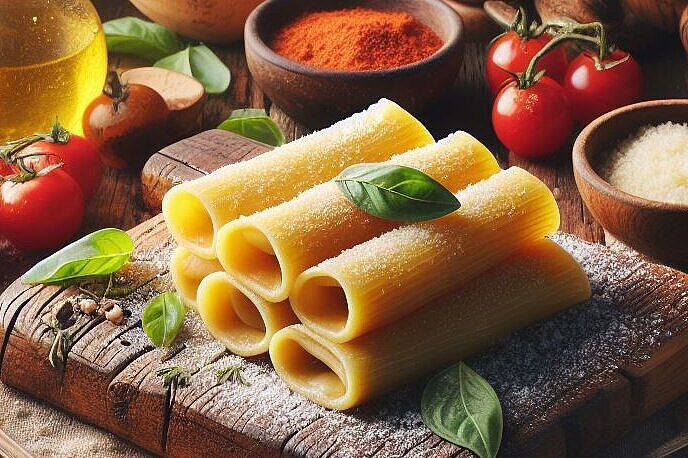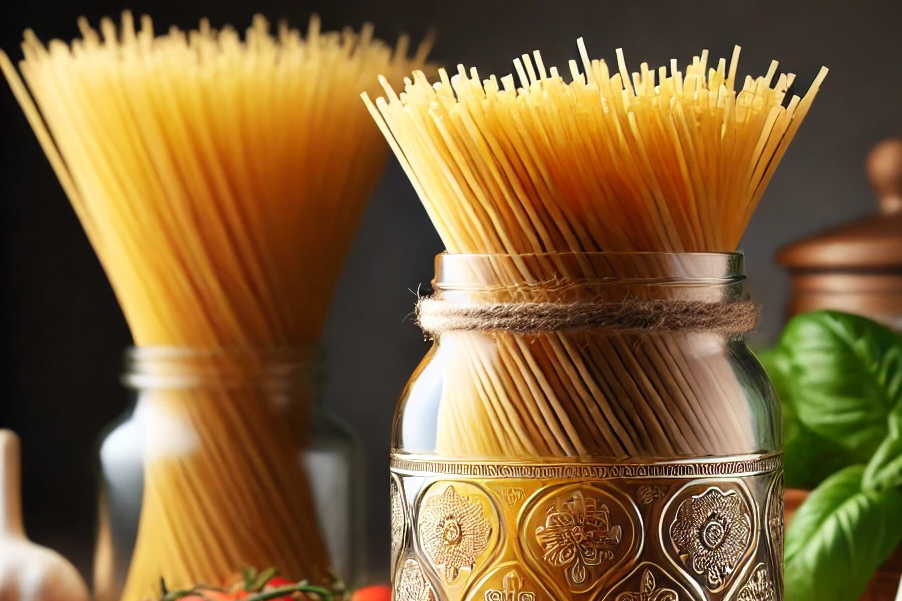Lasagne

Lasagne is a popular dish from Italian cuisine that consists of several layers of pasta sheets, minced meat sauce, béchamel sauce and cheese. It is baked in the oven until it has a golden brown crust. Lasagne not only tastes good to humans, but also to many dogs. But is lasagne healthy for your four-legged friend? In this article, you can find out more about the ingredients, benefits and disadvantages of lasagne for dogs.
What's in lasagne?
Lasagne consists of various ingredients, which can vary depending on the recipe. The most important are
- Pasta sheets: These consist of wheat flour, water and sometimes eggs. They provide carbohydrates and protein, which promote energy and muscle building.
- Minced meat sauce: This is made from minced beef, tomatoes, onions, garlic and spices such as oregano. It provides protein, iron and vitamin B12, which are important for blood formation and the nervous system.
- Béchamel sauce: It is made from butter, flour and milk and seasoned with nutmeg. It provides fat, calcium and vitamin A, which are good for bones and eyesight.
- Cheese: It is sprinkled over the lasagne and melts in the oven. It provides fat, protein and calcium, which also strengthen the bones.
What are the benefits of lasagna for dogs?
Lasagna can have some benefits for dogs if fed in moderation. For example:
- Lasagna is tasty and can stimulate the appetite of picky dogs.
- Lasagna is rich in protein, which is important for muscle building and regeneration.
- Lasagne contains many vitamins and minerals that support the immune system and can prevent deficiency symptoms.
- Lasagne can be used as a reward or as a change in the diet.
What are the disadvantages of lasagna for dogs?
Lasagne can also have some disadvantages for dogs if it is fed too often or too much. For example:
- Lasagna is very high in calories and can lead to overweight and obesity, which increase the risk of diabetes, cardiovascular disease and joint problems.
- Lasagna contains a lot of fat, which can lead to digestive problems such as diarrhea or vomiting. Fat can also overload the pancreas and cause life-threatening inflammation.
- Lasagna contains a lot of salt and spices, which can increase blood pressure and put a strain on the kidneys. In addition, some spices such as garlic or onions can be toxic to dogs and lead to anemia.
- Lasagne contains dairy products such as butter, milk and cheese, which can lead to lactose intolerance or allergies in some dogs. The symptoms are flatulence, diarrhea or itching.
How much lasagna can my dog eat?
Lasagne is of course not a suitable complete food for dogs, but should only be considered as an occasional treat. The amount depends on the size, age and activity level of your dog. As a rule of thumb, no more than 10% of your dog's daily calorie intake should come from snacks such as lasagna. This means, for example:
- A small dog (5 kg) should eat no more than 35 g of lasagna per day.
- A medium-sized dog (15 kg) may eat a maximum of 105 g of lasagna per day.
- A large dog (30 kg) may eat a maximum of 210 g of lasagne per day.
Lasagna is a delicious dish that you can share with your dog from time to time. However, make sure that you only give him small amounts and keep an eye on his health.
If you notice any signs of hypersensitivity or poisoning in your dog, you should see your vet immediately. We are not a substitute for a vet, but we try to be as accurate as possible. Every dog reacts differently and we recommend you get a second opinion or consult your vet if in doubt.
Stay healthy and take good care of your four-legged friend!😊
Similar to Lasagne
Cannelloni are large, tube-shaped pasta that are typically filled with a filling of meat, spinach and ricotta or other cheeses and then baked in a tomato or béchamel sauce. This savory dish is...
Spaghetti, one of the most popular pasta shapes, originated in Italy and is known for its long, thin, round strands. Traditionally made from durum wheat semolina, it now comes in numerous varieties,...
Ravioli is a type of filled pasta that originated in Italy and can be prepared in many different ways. The fillings vary greatly and can include anything from ricotta and spinach to beef and...
Tortellini are a type of pasta that originated in the Italian region of Emilia-Romagna. These small pasta pockets are traditionally filled with meat, cheese or vegetables and are often served in...



